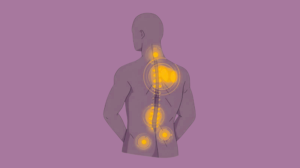Waking with a sore shoulder, stiff neck, or that “I didn’t sleep much” sensation? You’re among friends. Contour pillows are tried by everybody in an attempt to fight pain and sleep more soundly, waking up even stiffer than when you went to bed. Not the pillow that is the issue, but how we are using it. A contour pillow is meant to cradle the natural shape of your spine and neck but, when used in the wrong way, it will do more harm than good. From choosing the incorrect height to placing it backwards, even the slightest misstep can derail your alignment and wreck your sleep.
What makes it more complicated is that contour pillows are not a one-size-fits-all affair. Your sleeping position, size, and even mattress all have a lot to do with how well a contour pillow will serve you. And besides, most people want immediate gratification, unaware that it takes time for the body to acclimate to a new type of support. If you’ve ever felt let down by your contour pillow or aren’t sure if you’re using it correctly, this guide dissects the most frequent errors and how to correct them so that you can finally achieve the pain-free, restful sleep that you were promised.
Why Are Contour Pillows So Popular for Neck and Spine Health?
Contour pillows have been increasing in popularity simply because they are designed to mold themselves to the shape of the neck and spine, supporting and making them comfortable. Flat, old pillows can’t even come close, however, as they cradle your head and neck, giving you the support that you most need. One of the most common mistakes with contour pillows is using them too high or too low, which disrupts alignment. Directed support of this type can ease pressure from muscles and joints, enabling you to sleep more quickly and for longer. For others, they also enable not rolling over during the day and at night.
How to Properly Use a Contour Pillow for Neck and Spine Alignment
Understanding how to use contour pillows correctly is essential for getting proper neck and spine support. The design of these pillows aids cervical spine alignment by filling the space between your mattress and neck. Proper alignment minimizes muscle tension and pressure points causing pain. With respect to this, Mayo Clinic indicates that sleeping in proper spinal alignment can also decrease morning stiffness as well as enhance quality of sleep [1]. In the long run, using them consistently can also result in improved posture and avoid long-term neck or upper back pain.
What Happens If You Choose the Wrong Pillow Height?
The most common mistake is using a contour pillow with the wrong loft or height. A pillow that’s too low or too high will pull your neck into an unnatural alignment and create tension and pain. This unevenness will cause chronic neck pain, headache, or even numbness in the arm in the long run. Proper use of loft is thus just as important as pillow shape.
How to Choose the Right Loft for Your Sleeping Position
Back sleepers will typically do best on a medium loft pillow that stabilizes the neck without projecting the head. Side sleepers will typically need more loft to accommodate the space between head and shoulder. Stomach sleepers, who strain their necks unnecessarily in the first place, would best avoid contour pillows in general due to their firmness and shape. The Cleveland Clinic advises pillow height equalization to your sleeping posture in order to receive maximum neck support [2]. When you are in between sizes, consider adjustable pillows that have an insert that can be added or removed for your personal convenience.
Are You Using the Pillow Backwards?
A contour pillow is not an even shape. It’s simple for individuals to inadvertently use it in reverse, which defeats its purpose and introduces neck tension. This is a frequent habit because contour pillows can appear the same on either side, particularly in low light or through a pillowcase. Always take a few seconds to make sure you have it the proper way prior to sleeping.
How to Position Your Head and Neck Correctly
The edge on top of the contour rests against your neck, and the edge at the bottom rests against your head. This will keep your own natural cervical curve in place. Most pillows also have guidelines or lines on them where they are to be placed. Not following these can lead to improper support and even headaches. A small adjustment before bed can make all the difference in how you will wake up.
Why Sleeping Position Matters with Contour Pillows
Sleeping position plays a huge role in avoiding contour pillows mistakes. Contour pillows are designed mainly for back and side sleepers because these positions maintain a neutral spine. They’re wonderful for some, but might not work for others, particularly those who sleep on their stomachs. This side bends the neck by rotating it to one way, which is counterproductive to the advantage of a contoured pillow. If you are a staunch stomach sleeper, a low profile pillow or retraining your body to sleep on sides might work better.
Best Practices for Side and Back Sleepers
Side sleepers need to position their nose in the middle of their body and pillow should fill the gap between the shoulders. Back sleepers need to position the thinner part of the pillow at the back of the head and thicker part at the neck. In either case, the idea is to maintain the spine in a neutral alignment. Cervical alignment is vital for minimizing pain and maximizing sleep efficiency, as per a study printed in Journal of Physical Therapy Science [3]. Aligning your ears with your shoulders while sleeping can also minimize muscular tension and promote general posture health.
Are You Expecting Instant Results Without a Break In Period?
Most users resign on contour pillows too soon. Memory foam, a popular material for pillows, usually needs a break in time. Like new shoes, these pillows must have a little time to soften and mold fully to your unique shape. Resigning on them too soon might deprive you of comfort in the long run and improved sleep quality.
Tips to Transition from Traditional to Contour Pillows
Provide the body with time to get used to it. Begin using the contour pillow a few naps or alternate nights. Introduce it slowly into a routine. A few nights can feel slightly uncomfortable for some, but this tends to get better as muscles become used to optimal posture. As quoted by Harvard Medical School, any alteration in sleeping ergonomics may take up to two weeks to adjust [4]. Being supportive in sleeping habits, like stretching at night and maintaining a regular schedule, can also grease the skids.
Adjusting Your Sleeping Habits When Switching to a Contour Pillow
Switching to a contour pillow can feel unfamiliar at first because your neck and spine are being guided into a healthier alignment. It may take a few nights for your body to adapt, especially if you’re used to a traditional flat pillow. Start by using the pillow consistently in your usual sleeping position, allowing your muscles to gradually relax into the new support. Avoid switching back and forth between old pillows, as this slows down the adjustment phase. If you wake up feeling slightly stiff, it’s normal and usually temporary, your body is learning a better posture. With consistent use, most people experience improved comfort, reduced neck strain, and deeper sleep within one to two weeks. Adopting healthy sleeping habits and following Contour Pillow Sleeping Tips helps you experience better comfort, less neck strain, and deeper sleep within a week or two.
Have You Bought a Low Quality or Generic Brand?
Not all contour pillows are of the same quality. Cheap ones use low-density foam, which degrades rapidly, and such models become flat and lose their support. They are comfortable at first but eventually become flat after some time, disrupting spinal alignment. They usually lack certifications and, as a result, are harmful for individuals with sensitivities or allergies.
How Cheap Materials Affect Sleep and Health
Low density foam lacks the resiliency needed to deliver consistent support. Over time, this will lead to pressure that’s not evenly distributed on the spine and the neck. Look for pillows made of high density memory foam and are certified by CertiPUR US, which means they are chemical-free and have surpassed durability tests. A study in the Journal of Chiropractic Medicine underlined the importance of the material’s quality used in a bid to offer long-term support for the neck [5]. Enhanced materials not only increase comfort, but they also extend the functional lifespan of the pillow and overall health benefits.
Does Your Mattress Work Well with Your Pillow?
Even the best pillow won’t cut it if your mattress is not providing enough support. The interplay between your mattress and pillow affects overall spinal alignment. Think of your mattress and pillow as a team, if either of them is out of kilter, the whole setup will be off. This pairing can lead to constant soreness, especially in the lower back and neck.
Finding the Right Combination for Neck and Back Health
If a mattress is too soft, your body will sink into it, so even the best pillow will be unable to function properly. Conversely, a very firm mattress may pop shoulders and hips up, which changes head and neck alignment. Experts from Johns Hopkins Medicine suggest that most individuals utilize a medium-firm mattress to promote neutral spinal alignment, in conjunction with an ergonomic pillow [6]. Both of the products when tried individually at the store or for trial can ensure the proper fit to your sleeping requirement.
Are You Maintaining and Replacing Your Pillow Properly?
Eventually, even the finest quality contour pillows will go flat and lose their support. Neglect will also cause dust mite infestation and cleanliness problems. A grimy abandoned pillow can quietly irritate allergies, cause asthma, or initiate outbursts of acne. Care is not only important to the comfort factor but for your health too.
Cleaning and Care Tips for Memory Foam Pillows
The majority of memory foam pillows have washable, removable covers. Spot clean and air the foam regularly. Replace your pillow every 18 to 36 months based on usage and wear. Research conducted in the Sleep Health journal in 2021 revealed that old pillows were linked to increased allergen levels and low-quality sleep [7]. Place a reminder to review your pillow annually in a bid to avoid long-term complications and maintain your sleeping environment clean and supportive.
How Do You Choose and Use a Contour Pillow Correctly?
Getting the most out of your contour pillow involves careful selection and smart habits.
Daily Habits to Improve Sleep Posture
- Choose a pillow suited to your sleep position and body frame
- Place the higher contour under your neck, not your head
- Maintain a neutral spine with shoulder, hip, and ankle alignment
- Avoid using multiple pillows, which may elevate your head excessively
- Pair your pillow with a supportive mattress
Final Thoughts
Contour pillows will do marvelous things for sleeping position, alleviate the pain in the neck and improve overall sleep if done correctly. It’s just a matter of getting the pillow fitted to your individual needs, gritting it out and allowing it to work, and not doing the same old same old that makes it ineffective. When used in conjunction with the right mattress and sleeping position, the advantages can be so much more than an awesome night’s sleep.
By noting the way in which you sleep and choosing better materials, you can quietly make a massive difference with gigantic health benefits. Consistency is everything, so let your body get accustomed and notice how you feel when you get up each morning. Using the correct technique, your contour pillow can be one of the most effective devices for extended treatment of your neck and spine.
Frequently Asked Questions:
1. What is a contour pillow and how does it work?
A contour pillow has a curved design that supports the natural alignment of the head, neck, and shoulders. It helps reduce pressure points and maintain spinal alignment.
2. How do I know if a contour pillow is right for me?
If you experience neck or upper back pain, especially as a side or back sleeper, a contour pillow may offer improved support. Stomach sleepers may not benefit as much due to the pillow’s shape.
3. How long does it take to get used to a contour pillow?
It may take up to two weeks for your body to adjust. Gradual introduction can ease the transition.
4. Is a contour pillow good for side sleepers?
Yes, especially if it has the right loft to fill the gap between your head and shoulders. It can help maintain spinal alignment throughout the night.
5. Can I use a contour pillow on any type of mattress?
Yes, but for best results, pair it with a medium firm mattress that supports spinal alignment.
References:
1. Mayo Clinic, Sleep Tips: 7 Steps to Better Sleep, Mayo Clinic – https://www.mayoclinic.org/healthy-lifestyle/adult-health/in-depth/sleep/art-20048379
2. Cleveland Clinic, How to Pick the Perfect Pillow for the Way You Sleep, Cleveland Clinic – https://health.clevelandclinic.org/how-to-choose-the-best-pillow-for-the-way-you-sleep
3. Okabe N et al., Effects of pillow height on neck muscle activity, Journal of Physical Therapy Science – https://www.jstage.jst.go.jp/article/jpts/29/10/29_jpts-2017-211/_html
4. Harvard Health Publishing, Sleep and Health, Harvard Medical School – https://www.health.harvard.edu/newsletter_article/sleep-and-mental-health
5. Persson L et al., Sleep Posture and Use of Pillow for Cervical Pain, Journal of Chiropractic Medicine – https://www.ncbi.nlm.nih.gov/pmc/articles/PMC2647085/
6. Johns Hopkins Medicine, Choosing the Right Mattress and Pillow, Johns Hopkins – https://www.hopkinsmedicine.org/health/wellness-and-prevention/how-to-choose-the-right-mattress-and-pillow
7. Sleep Health Journal, Pillow hygiene and its effects on sleep, Sleep Health – https://www.sleephealthjournal.org/article/S2352-7218(21)00162-9/fulltext























